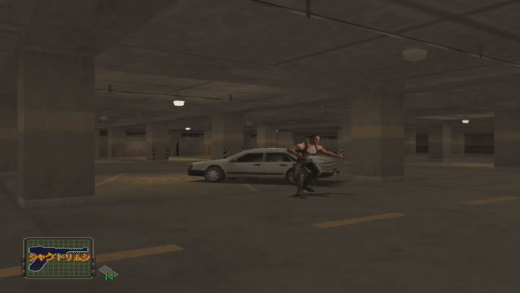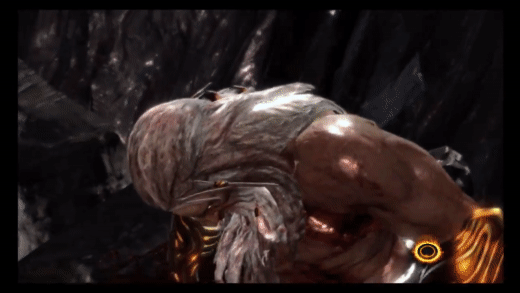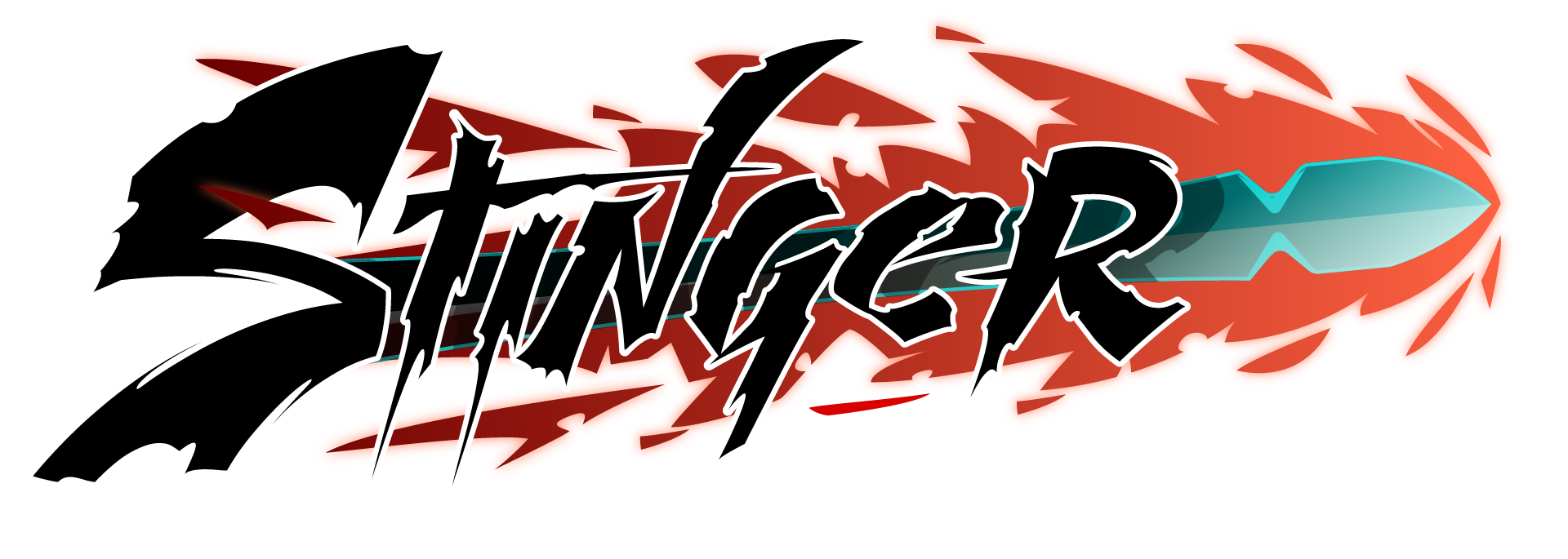MouseWheel Down
to Read Article

What you just did… is an experience gamers have gotten all too familiar with. One second you’ll be playing a game, only for it to temporarily stop and tell you to press a certain button. Succeed and the game continues as normal. Fail and you’re generally treated to a funny game-over screen.
The template for these interactions hail from old interactive movies such as Kinoautomat (1967) and later LaserDisc films suchs as Lupin III’s Cliff Hanger (1983) and the famous Dragon’s Lair (also 1983). Using the LaserDisc’s ability to quickly jump between segments allowed a button press to switch between multiple scenes.
When games started to implement more cinema into their experiences during the end of the Playstation 1 era, looking for a way to add interaction was a logical step to take. The result was first seen in Dynamite Deka (ダイナマイト刑事) also known as Die Hard Arcade, in 1996.

While a sleeper hit, the mechanic didn’t take off until the release of Shenmue (シェンムー) in 1999 on Sega’s Dreamcast. Released fifteen months after Metal Gear Solid had propagated for stronger storytelling in mainstream games, Shenmue’s story implemented Dynamite Deka’s systems into its many cutscenes.
Then named Quick Timer Events, these button prompts made once cool cutscenes that had players put down their controller now grasp them, making sure they were always interacting. Behind the screens it allowed the designers to craft more unique scenarios without having to build a game around it. There was no need for soccer physics or an entire mechanic to have protagonist Ryo catch a ball. Just let it play out in a cutscene and use a Quick Timer Event to have him catch it for more or less the same result without influencing the core gameplay.

In defense of the later Heavenly Sword (2007), which heavily featured this mechanic, SCEA’s Kyle Shubel replied that “the intent of the sequences is to empower the player to experience events that would be nearly impossible to play in a natural platforming state… for example, making the player run down ropes, leaping from rope to rope as they’re being cut from underneath you, all while dodging other objects — that would be a frustrating experience to 99 percent of our users if we were to force them to do that manually.“
Where most titles at the time focused on just doing one thing, Shenmue’s Quick Timer Events made it into an adventure where players had well choreographed fight scenes, stealth sections, case scenes, motorcycle races and more.
As such the Quick Timer mechanic was a hit and started to make its way into multiple games that sought to copy or improve upon it. Reviews lambasted games for not having them and like most trends they started to pop up in each and every game until it outstayed its welcome. At this point it slowly faded into obscurity once again.
This is nothing new and something we’ve seen with game genres and gameplay mechanics in all shapes and sizes, like the advent and downfall of stamina bars in the seventh generation and rise of the Battle Royal games in the eight cycle which is destined to fall sooner or later as well.
Why did this trend outstay its welcome though? Was there merit in its addition? Was it misinterpreted by designers? Was it a novel concept, rotten to the core, that showed its true colors before long? Or… did people really just get tired of it?
PRESS SQUARE TO ANALYZE
Looked at from afar, Quick Time Events (QTEs) appear to come in two types. First off, the Interruption. For a short moment a cutscene is interrupted with a button appearing on-screen with numerous results should we fail or succeed. An example of this would be the famous knife-fight with Krauser in Resident Evil 4 or the mid-cutscene button-presses in The Force Unleashed. This seems to be the most common and (in)famous type.
Then there’s the Prompt – also referred to as Action Events or Action Buttons – button icons that pop up during gameplay, not during cutscenes, with an action as reward. These tend to allow for more gameplay options without tying a button down, such as Leon’s kick in Resident Evil 4.
There are lots of other variables to distinguish them of course: some Quick Time Interruptions might have multiple choices with different outcomes, varying timers or a total absence of one.
Meanwhile some Quick Time Prompts can cover anything from a timed event like dodging a boss’s attack or something mundane such as pressing ‘A’ to open a door.
To get a better understanding of these two types, let’s dive a bit deeper into them. For clarity purposes we will refer to these two types as ‘Quick Time Interruption’ and ‘Quick Time Prompt’ from now on, with ‘Quick Time Event’ as the umbrella term.
The Quick Time Interruption
Let’s start with a simple question: what is, plainly speaking, the goal of a Quick Time Interruption? The answer: that the player never lets go of the controller. With games implementing more elements from cinema as the hobby aged, cutscenes started to last longer. While long stories were generally limited to roleplaying games in the early 90’s, with the turn of the millennium even a gameplay focused title like Super Mario Sunshine opened with a cutscene lasting more than a minute, while other games would include up to six hours of cutscenes in total.
A change one could see as contradictory to the medium. Games are meant to be played and a cinematic is meant to be watched. It is natural for a game to then want to search for ways to combine these.
Resident Evil 4 for example is a horror game with an emphasis on tension. You’re constantly hunted by villagers while a chainsaw hums in the distance, pumping adrenaline into your veins as you fear Doctor Salvador’s maniacal scream around every corner. Its areas are mostly claustrophobic with not a lot of room to maneuver and there’s something eerie about the village and later castle.
When players see a shadowy figure appear in the background and Leon pulls his knife, the player grips the controller instead of putting it down in favour of some popcorn. While originally safe havens to relax, due to the implementation of Quick Time Interruptions these cutscenes now continue the game’s trend of fear and tension, amplifying the title’s goal.

Another example is God of War, where the interruptions allow for Kratos’ more complicated action set pieces to be experienced by the player. An example being the point-of-view segment where Kratos bashes Zeus’s skull in by mashing the circle button, venting all the player’s rage towards the character after three games of abuse, without having to build an entire fighting game around it. This mashing can also be used to physically tire a player out, as seen in Metal Gear Solid 4’s microwave hallway, immersing them more in Snake’s situation by also exhausting them physically.
Put into other sequences they might add far less though. A press of a button to jump away from a fireball, tapping X to call for your son, pressing F to pay respect; at best, they still serve the function of players not getting complacent, at worst they will just distract from the cool cutscene playing out with players ignoring what’s going on on-screen to instead focus on the gap where a button might appear which at the same time feels pointless.
As such, spacing is incredibly important here. Done too often and the tension goes away, not done enough and players forget that the interruptions are a thing, resulting in controllers being put down again.
The biggest layer that impacts the quality however is the questions behind the Quick Time Events. When do they occur, what buttons are used, what happens before and after them and how do they impact gameplay.
Bayonetta has a quite infamous example at the end of its second chapter. Here the player is greeted by a Quick Time Interruption as the final cutscene plays out, but not only is the required button randomized, the input time around one second and has failure result in instant death… it is also the first Quick Time Interruption in the game.
Frequency aside, there are smaller lessons to be learned from this extreme example. Randomization of button presses can lead to confusing situations, compare this to Asura’s Wrath where, when a Quick Time Event sees Asura punching someone in a cutscene, its required button is the same as the one used to punch enemies during gameplay. This makes the button feel more natural and also gives the player some idea of what might be coming up. Consequently, certain other inputs are best avoided entirely, like waggling a stick, which can damage controllers in the long run.

How long players have to react and what the consequences for failure are can be paced out throughout the game, depending on the title’s vision of course. Earlier events can have longer reaction times, such as Leon avoiding the falling axe. This scene gives players nearly 4 seconds to react with failure setting them back only seconds, while later interruptions can have a reaction time of only a second with the far heftier punishments.
These failstates don’t have to always result in death either. Shenmue constantly changed the scene until enough failures were met, while in other games a boss might regain some of his health.
This jibes well with success states also becoming more than just allowing you to play the game further. Asura’s Wrath gives you a higher rank for getting your timing down on enough of the QTEs, while games like Yakuza might reward you with some extra Heat or have a boss start out with some damage if you succeed the Interruption. These types of fail and success states work better with the complete package, as they aren’t an all or nothing show.
In the end though, these mechanics only exist to make the Quick Time Interruption as enjoyable as possible. Because it comes back to what Kyle Shubel noted earlier on in the article: empowerment. These scenes can give bad players the chance to be stylish, cinematic and experience cool choreographed action set pieces. How you build them impacts only how enjoyable they’ll be in the long run.
The Quick Time Prompt
On the other end of the spectrum lies the Quick Time Prompt, little sections during gameplay where a button press leads to unique actions.
A few examples to set the stage: in Yakuza you can press buttons during a Heat Action for added moves and damage or mash square when doing a strong attack for bonus damage. Meanwhile in Resident Evil 4 Leon can dodge by pressing either A+B or L+R when applicable and vault over ledges by pressing A.
Sometimes the lines are blurred however. In Death Stranding you can grab on to your backpack by using the appropriate shoulder button, L2 for your left hand and R2 for your right. If you trip and see Sam leaning to the right, you need to hold L2 to restore your balance. An action that is prompted to you on screen by a flashing L2 icon. Should players disable input-overlays from the menu though, this prompt vanishes. Is that still a ‘QTE’?
This way of thinking can also be reversed. In Devil May Cry 4, Nero can use his Buster attack to stop the final boss’s super move dead in its tracks while in Nioh 2 players can use Burst Counter to interrupt perilous attacks from enemies. What if there was a button on screen here, what would that change?

These lines get blurred to the point of transparency with games like Spec Ops: The Line. In a penultimate scene players are confronted with a mob that has just murdered one of your crew. Outmanned, they have you surrounded. Control is then given back to the player where the options seem clear, either shoot the crowd or walk through them at the risk of your own life. There’s a hidden third option however where players can shoot above the crowd, which makes them run away.
Had this been a simple QTE like so…

… then the impact would’ve been vastly different and would actually work against the goal of continued immersion.
As such, these Prompts should aim to do what absolutely cannot be done in immediate gameplay or where a higher level of detail is required. Leon didn’t need a dedicated Kick button, there’s no need for a unique button for opening chests and another to leap over specific environmental obstacles, there’s no need to build an entire mechanic to have Yakuza’s Kiryu grab an enemy, slam him into a lamppost and then allow players to stomp on them – just a prompt after grabbing him will do.
In God of War, when an enemy has taken enough damage they’ll get a glowing circle above their head. Press the button and Kratos will start a unique set of Prompts to kill them. While this sounds like something you’d always do, God of War ties this into the gameplay. If you kill a Minotaur this way, he’ll always drop health orbs, while Sirens drop magic orbs. Yet, kill them normally, and they drop upgrade orbs – adding a little layer of strategy to the mechanic to those keen enough to notice. Will you go for the cinematic kill for a quick heal? Or kill them normally for some extra upgrade points? When Prompts are done right, they can really elevate the experience.
At times Prompts can also make a dull action interesting if done right. Opening a giant door in God of War by mashing Circle really makes the door feel heavy, but asking players to mash a button to open every door and chest leads to boredom, even more if failure just means having to do it again. Similarly, hammering the X button to open a ventilation shaft in Batman: Arkham Asylum is tense in a stealth scenario, seeing you press as hard as possible, hoping you’re not spotted before you can get that shaft open. Having players to do it for every vent lies counter to that.
Conclusion
It’s hard to stop talking about all the different Quick Time Events and their examples, since there’s so many of them. From Spider-Man 3’s hilarious failstates to punching boulders in Resident Evil 5 to Tomb Raider’s brutal death-scenes, there’s plenty to examine and, at times, laugh at. Instead though let’s now try to note some lessons that can be learned and things to keep in mind for a good Quick Time Event.
We started the article with a question; why were Quick Time Events so soured in the eyes of players. Well, it was mostly that they focussed too much on the superficial. Add a button, get a scene or two.
Instead, Quick Time Events, in all their shapes and sizes, should focus on doing what couldn’t be done in gameplay at all. And even then it might just be better to just show it and let players enjoy the cutscene instead of worrying what might happen during it. They work best when tightly paced throughout the campaign to highlight and emphasize key moments.
And when you do put them in, have them play to the game’s strengths and overall vision while also offering a good in-game reward and punishment beyond a simple fail or success screen. Have bosses start with less health, refill our energy or give us bonus points to spend later-on; the sky’s the limit. When we do press that button, be consistent with your gameplay. If X has someone jump in gameplay, don’t let A be the jump button of choice during Quick Time Events.
Quick Time Events have a lot to offer. They highlight cool moments, increase tension and player immersion and allow for a modicum of interactivity where there used to be none. It’s sad they were quickly put into every title imaginable as the killer app, instead of another tool in the developer’s toolkit for making a better game than before. Here’s hoping that one day they’ll be used appropriately.
斬 postscript notes 斬
- Due to memory restrictions, LaserDisc was unable to fully emulate the old choose-your-own adventure novels and ended up being replaced by video-games nearly entirely until Netflix started to experiment with it again with Puss in Boots (2016) and Bandersnatch (2018);
- I really wanted to mention a game from Quantic Dreams, which have often been called “Quick Time Event games”, but felt it didn’t fit in an article on a site mostly about action games;
- I called them ‘lessons’ near the end and not ‘rules’, because rules are always hard to nail down. If you make a rule, the opposite can be used to surprise players in innovative ways;
- The counter system from Arkham Asylum was also originally mentioned, but removed. I like how it is sort of a prompt which loses its button notification on Hard Mode. It kind of filled the same niche as my Death Stranding example though, so I removed it;
- In a fun twist, God of War 2018 allows players to replace every Quick Time Event with a hold-button-action, allowing physically handicapped players to also pass the section.
- These handicaps were something I also wanted to cover, but I honestly felt that was a much, much bigger topic that extends way beyond just Quick Time Events. I’m also not experienced enough with the matter to speak about it;
- Another infamous example I wanted to call out, but didn’t, was the QTE in Chapter 4 of Mirror’s Edge, where the player is quickly tasked to do a QTE to beat an encounter, the first and only QTE in the entire game. An absolutely terrible decision;
- I originally wanted to focus the article more around Koudai.T’s video, in how it offered stylish enjoyment to the viewer and the player at hand, and how QTE’s allow players to feel like Koudai without putting in thirty hours of practice;
源 sources 源
- https://residentevil.fandom.com/wiki/Action_Button_moves_in_Resident_Evil_4
- https://twitter.com/BlacWeird/status/1289911209714737152?s=19
- https://gamerant.com/games-most-difficult-quicktime-events-ranked/
- https://www.thewhitereview.org/feature/the-quick-time-event/
- https://qz.com/1533636/the-complex-reasons-humans-are-obsessed-with-pressing-buttons/
- https://www.gamasutra.com/view/news/123345/Feature_The_History_And_Evolution_Of_The_QuickTime_Event.php
- https://kotaku.com/what-do-you-know-all-this-time-and-weve-got-qte-wrong-5958716
- https://www.destructoid.com/stories/nothing-is-sacred-quick-time-events-151075.phtml
- https://www.gamasutra.com/view/feature/6240/full_reactive_eyes_entertainment_.php


As a brief but satisfying payoff to an already defeated challenge, I like them. For example, you fight the boss in regular gameplay, and once you’ve whittled their health down to 0, then you get to finish them in a brief QTE, which, I agree, should be so impressively animated that it couldn’t be done in gameplay,. I also love them for their ability to keep your mind mentally melded with the character, during the cutscenes. So, no putting the controller down and passively watching as a bystander. You’re still “there”, right? I think, overall, mashing QTEs feel best, especially if the animation speeds up or slows down based on how fast you’re mashing. I love this in Bayonetta and The Wonderful 101. Remember that bug boss in TW101 where you grow in size and stomp on it? haha There’s just no way that would feel anywhere near as good if it was just a simple cutscene. It terms of “feel”, it’s the difference between doing something and watching it happen.
Truth be told, I think Sekiro implemented QTE-like concepts in the best way possible. After defeating a boss, they open up for a Shinobi Deathblow, which I guess is more like a one-button Fatality from Mortal Kombat. I got so excited during the Genichiro Deathblow that I dribbled from my mouth, and my involuntary exertion sounds woke everybody in the house up, lol! I’ve never been so excited in a game. Ever. What I experienced there, I never knew was possible. It was next-level excitement, beyond anything a game has ever made me feel. It really took the sense of achievement that you get from beating a tough boss and multiplied it by 100. Bloodborne by comparison has the bosses just fall over and explode into a blast of light. That’s cool, too. Then you can choose how you finish the boss, and often use that space to perform Gestures. But the way Sekiro handles it just hits higher notes, for me.